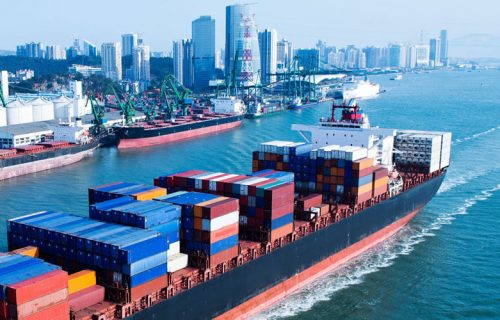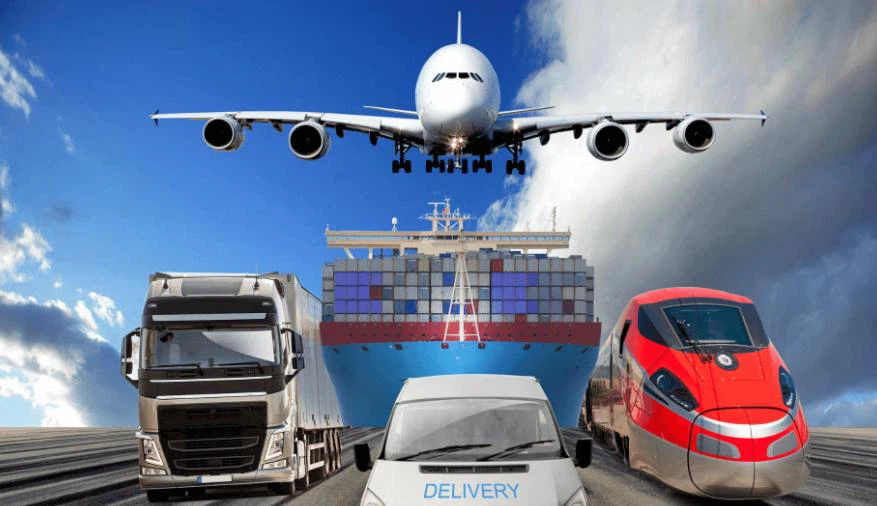- By TOP CHINA FREIGHT
- September 3, 2025
- Shipping
Table of Contents
Efficient transport China solutions are essential for businesses engaged in international trade. Choosing the right shipping method affects costs, transit times, and overall supply chain performance. This guide explores different transport options, pricing, documentation requirements, and practical tips to optimize shipping from China to global destinations.

What Are the Key Transport Methods in China?
China offers multiple shipping methods, each with unique advantages depending on shipment size, urgency, and budget.
| Method | Cost Range | Transit Time | Pros | Cons |
|---|---|---|---|---|
| Sea Freight (FCL/LCL) | $1,000–$3,500 per container | 20–40 days | Cost-effective for bulk shipments | Slow, port handling needed |
| Air Freight | $5–$12 per kg | 4–10 days | Fast, ideal for urgent cargo | Expensive for heavy items |
| Rail Freight | $1,500–$3,500 per 40ft container | 12–22 days | Balanced speed and cost | Limited routes |
| Express Courier | $10–$25 per kg | 3–7 days | Door-to-door, tracking included | High cost for large parcels |
Tip:
Sea freight is suitable for large orders, air freight for urgent shipments, rail for medium-size industrial goods, and express courier for small parcels.
How Is Transport Cost China Determined?
Shipping costs from China depend on multiple factors. Moreover, understanding each factor helps businesses plan budgets more effectively:
| Factor | Explanation |
|---|---|
| Weight & Volume | Heavier or larger shipments increase costs |
| Shipping Method | Sea freight is economical, air and courier are premium options |
| Season & Demand | Peak seasons like Chinese New Year increase rates |
| Port & Handling Fees | Include fuel surcharges, customs, and inland transport |
Typical Costs and Transit Times for Different Methods

| Method | Shipment Size | Approximate Cost (USD) | Transit Time |
|---|---|---|---|
| Sea Freight FCL 20ft | 20–25 m³ | $1,000–$2,000 | 20–28 days |
| Sea Freight FCL 40ft | 40–45 m³ | $2,000–$3,500 | 25–40 days |
| Air Freight | 10–50 kg | $5–$12 per kg | 4–10 days |
| Rail Freight 20ft | 20–25 m³ | $1,500–$2,500 | 12–18 days |
| Rail Freight 40ft | 40–45 m³ | $2,500–$3,500 | 12–22 days |
| Express Courier | 1–50 kg | $10–$25 per kg | 3–7 days |
Tip:
Consolidating smaller shipments can reduce costs, particularly for LCL or air freight.
What Documents Are Required for Transport China?

Proper documentation ensures smooth customs clearance and avoids unnecessary delays:
| Document | Purpose |
|---|---|
| Commercial Invoice | Declares goods value, buyer, and seller info |
| Packing List | Details contents, weight, and dimensions |
| Bill of Lading (B/L) | Required for sea shipments |
| Air Waybill (AWB) | Required for air shipments |
| Certificate of Origin | Verifies country of origin |
| Import License | Required for restricted products |
| Insurance Certificate | Protects against loss or damage |
Tip:
Freight forwarders can handle documentation, ensuring compliance with international regulations.
Sea Freight vs Air Freight vs Rail vs Courier: Which Is Best?
| Method | Advantages | Limitations | Best Use Case |
|---|---|---|---|
| Sea Freight | Economical for bulk shipments | Slower transit | Large industrial shipments |
| Air Freight | Fast and reliable | High cost for heavy items | Urgent or high-value goods |
| Rail Freight | Moderate cost and transit | Limited network | Medium-size industrial shipments |
| Express Courier | Fastest, door-to-door | Expensive | Small parcels and e-commerce |
Case Study:
A company in Germany imported 400 automotive parts from Shanghai using rail freight. The shipment arrived in 16 days, faster than sea freight, and cost 60% less than air freight. The freight forwarder coordinated customs clearance and inland delivery to the warehouse.
How Freight Forwarders Optimize Transport China Solutions
Freight forwarders play a crucial role in reducing costs and simplifying shipping processes:
- Consolidating small shipments to reduce costs
- Negotiating competitive freight rates
- Managing customs clearance and documentation
- Providing tracking and delivery updates
How to Track Shipments from China
Tracking ensures transparency and helps businesses plan deliveries efficiently:
- Air and courier shipments are tracked via AWB or tracking numbers
- Sea freight containers are monitored with container numbers
- Rail freight provides updates at departure and arrival terminals
Tip:
Confirm tracking services with your forwarder to plan for last-mile delivery efficiently.
Common Challenges in Transport China
- Customs delays due to incomplete paperwork
- Seasonal surcharges increasing overall cost
- Transit delays from weather, port congestion, or bottlenecks
- Cargo damage due to poor packaging or handling
Tip:
Insure shipments and select experienced forwarders to minimize risks.
Example: Shipping Electronics from Shanghai to Rotterdam
| Parameter | Details |
|---|---|
| Shipment Type | Rail freight, 20ft container |
| Cargo | 400 electronic units |
| Cost | $2,200 including customs and insurance |
| Transit Time | 16 days |
| Outcome | Arrived on time, no customs issues |
This example demonstrates how planning and a reliable freight forwarder can ensure smooth, cost-effective delivery.
Conclusion
Efficient transport China solutions require understanding multiple shipping methods—sea, air, rail, and courier—and their respective costs, transit times, and documentation requirements. Rail freight offers a balanced solution between cost and speed, sea freight suits bulk shipments, and air or courier is best for urgent deliveries. Working with a reliable freight forwarder ensures cost-effective, timely, and safe delivery. Companies can optimize supply chains, reduce expenses, and meet business deadlines effectively.
Need a Shipping Quote?
If you want expert guidance and peace of mind, our team is ready to assist.
TJ China Freight offers tailored solutions to help businesses of all sizes ship more reliably from China.

FAQs
Q1:Can I ship hazardous materials from China?
Yes, but only with proper permits and documentation. Certain chemicals or flammable goods require compliance with international shipping regulations and may incur higher transport costs.
Q2:How do I estimate import taxes and duties from China?
Import duties depend on product type, HSN code, and declared value. GST and other surcharges may apply. Using a forwarder can help accurately calculate total charges.
Q3:Are there eco-friendly transport options in China?
Rail freight is more environmentally friendly than air freight, producing lower emissions per ton of cargo. Some shipping companies also offer green-certified sea transport options.
Q4:How is volumetric weight calculated for air freight?
Volumetric weight = (Length × Width × Height in cm) ÷ 6000. Airlines charge based on the higher of actual weight or volumetric weight.
Q5:Can I consolidate multiple shipments to reduce costs?
Yes, LCL for sea freight or consolidated air shipments allow multiple small consignments to share container space, reducing per-unit shipping cost.
